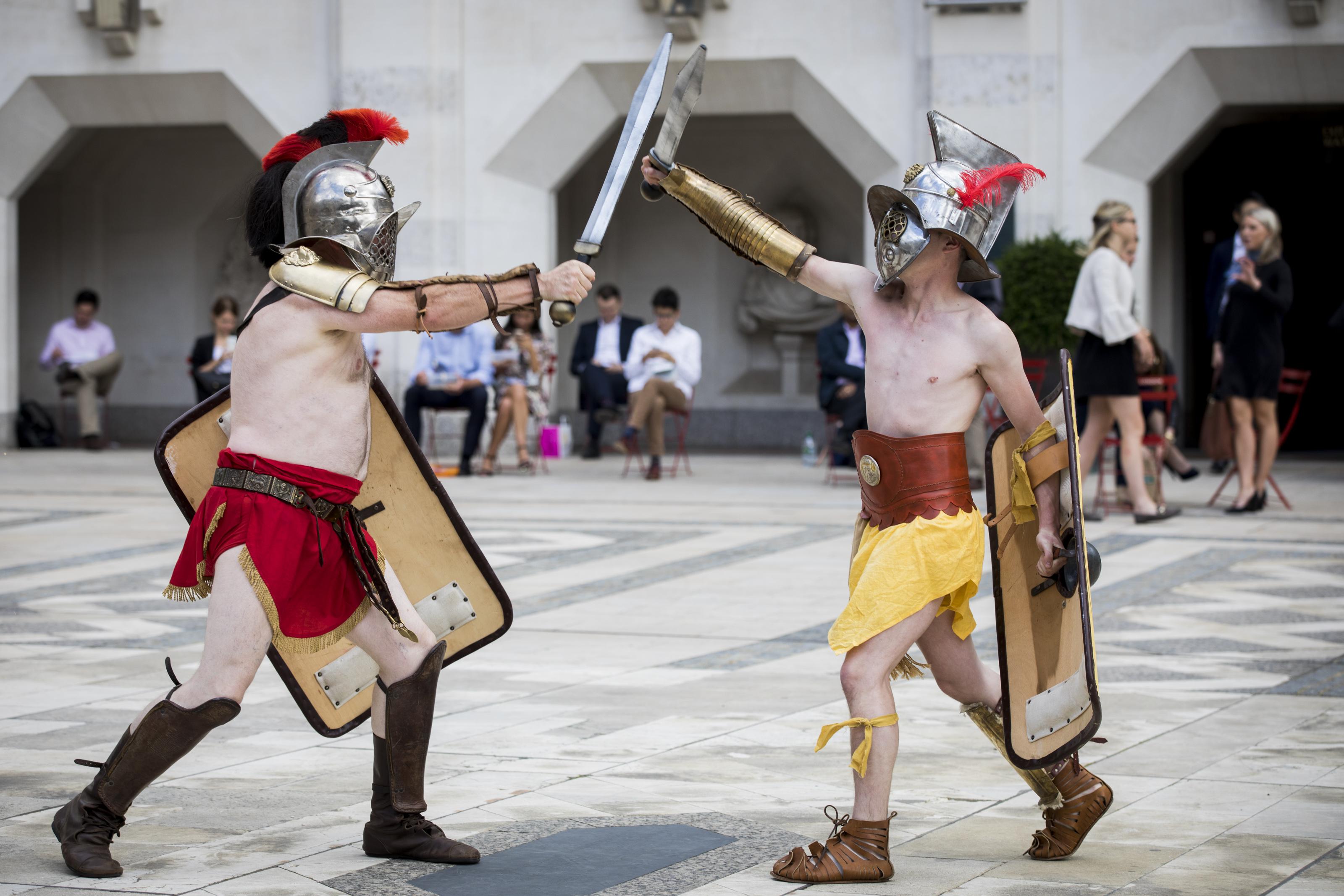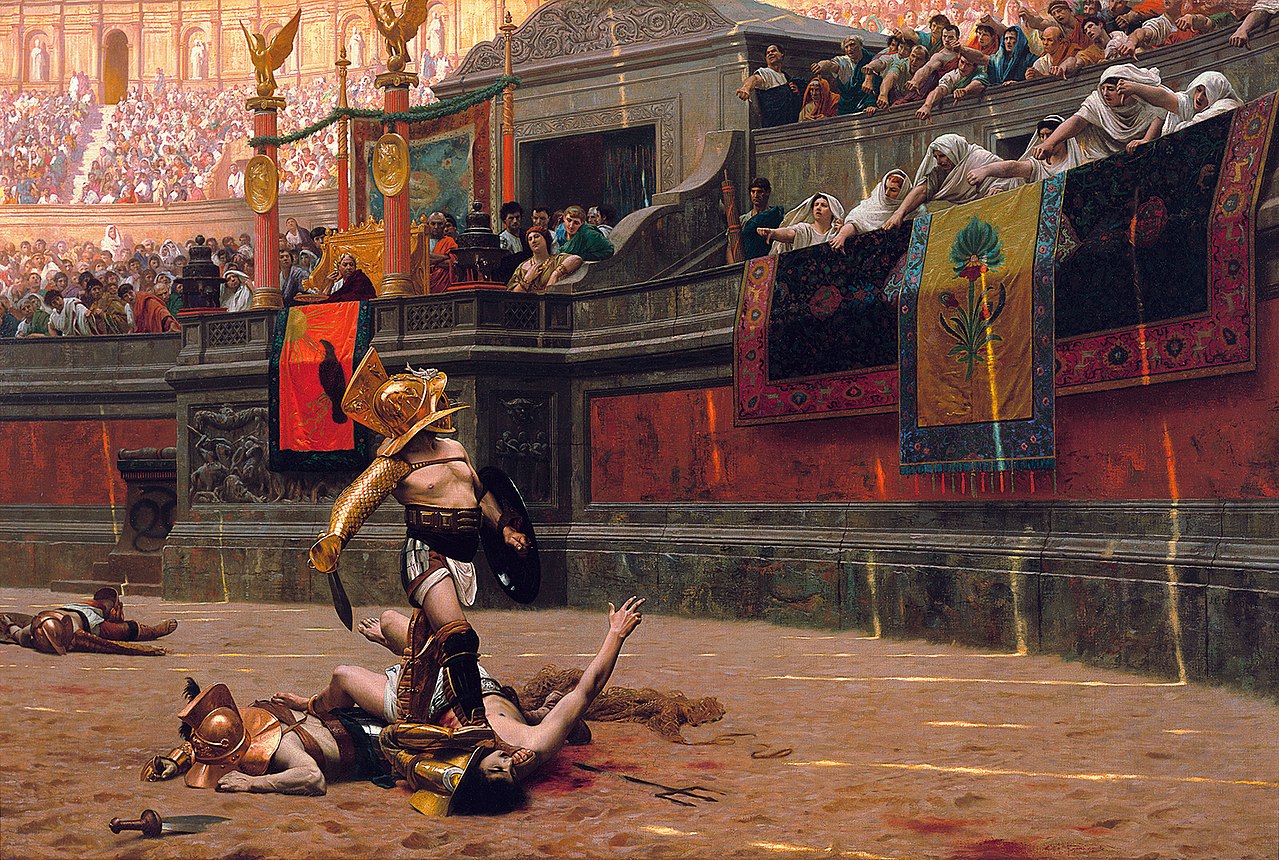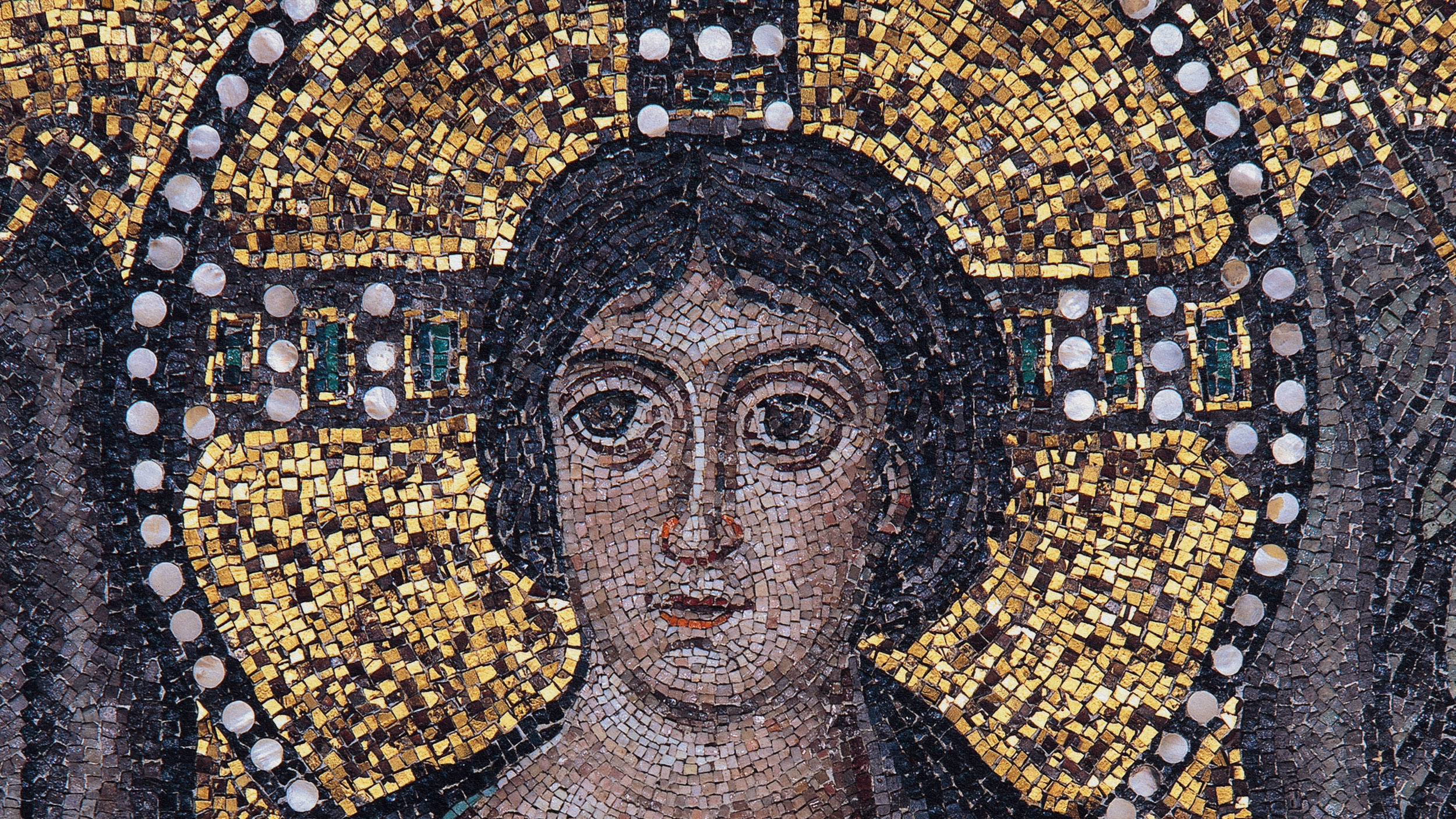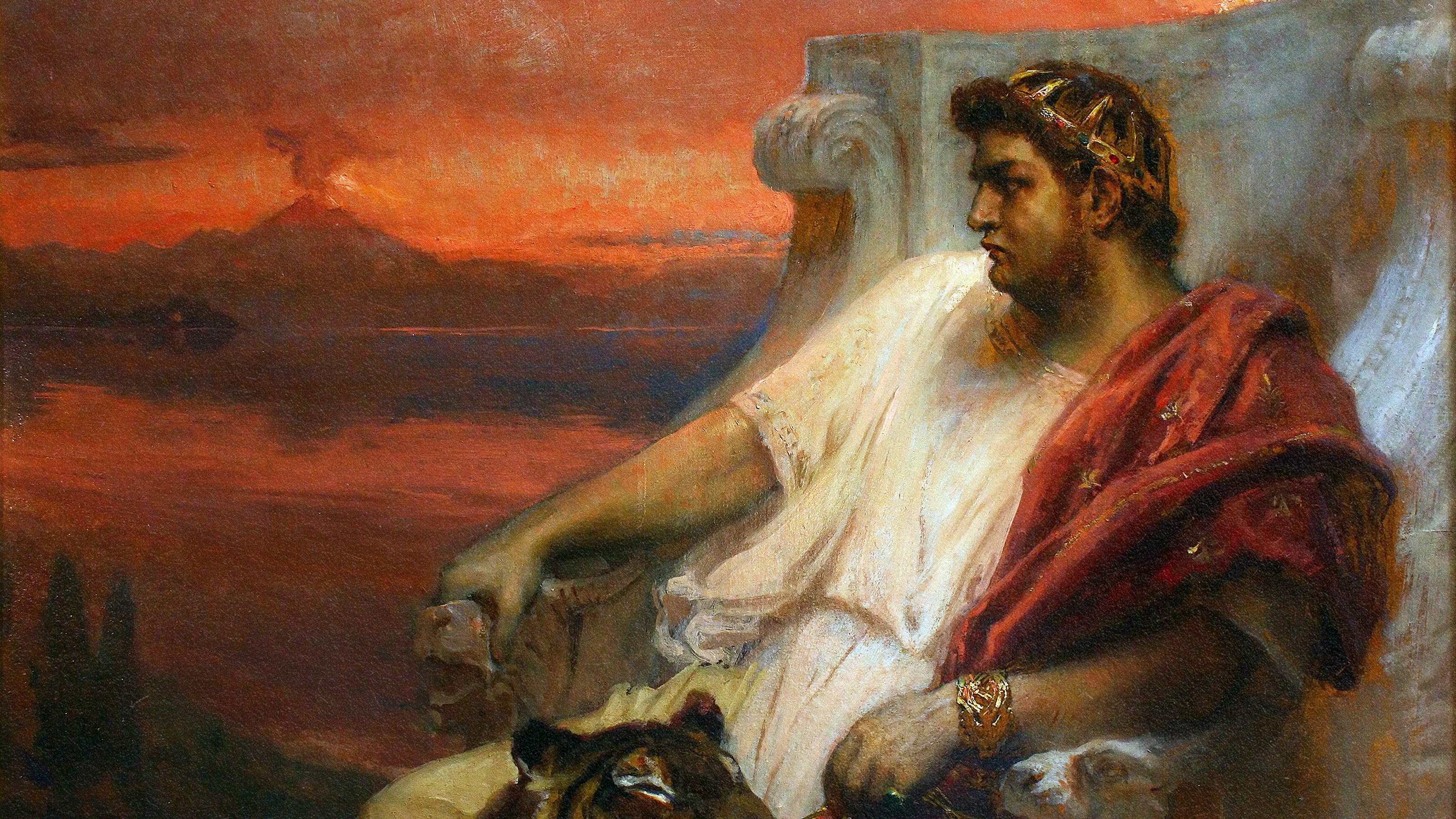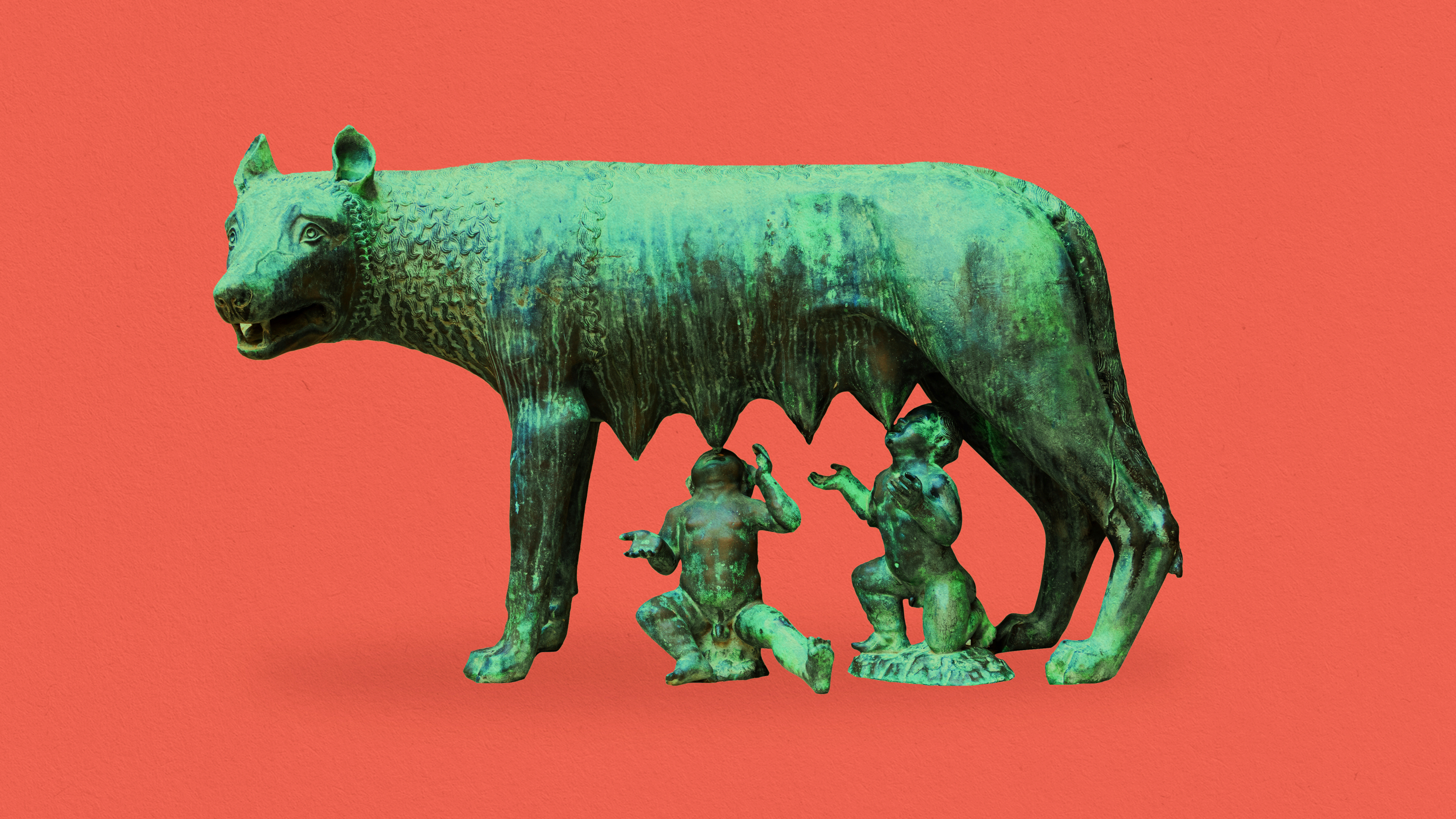World expert and film consultant debunks 3 gladiator myths

- Gladiators rarely died in fights, as gladiatorial combat was more about demonstrating physical and mental endurance, martial skill, and athleticism.
- There were between 20 and 30 different styles of gladiatorial combat. Gladiators would adopt a style based on their body type and the choice of their trainers.
- Gladiatorial fights had rules, including fighting in rounds. Referees were present to enforce rules, caution fouls, and handle appeals.
One of the most iconic moments in movie history is when Russell Crowe, dressed in leather and brandishing a bloodied gladius, turns to an awe-struck and silent coliseum to shout, “Are you not entertained?” Yes, Russell, we are. Very much so. Whether it be big-screen Hollywood blockbusters, TV historical dramas, or Las Vegas live shows, people love the idea of ancient gladiatorial fights.
What’s there not to love? There’s blood, sweat, and tears. There’s swinging, punching, kicking, and slashing action, punctuated by shocking gore and the promise of imminent death. In the bloodthirsty chants of a frenzied crowd, we see our shadow selves. We may tut at the Rome Colosseum, yet we cannot turn our heads away from the violence.
One problem, though, is that we get so much of it wrong. The history we see is very different from the history as it was. To help sort Roman history from Roman myth, Big Think spoke with Alexander Mariotti. Mariotti has been a consultant on big shows like HBO’s Rome, Starz’s Spartacus: Blood and Sand, and Paramount Pictures’ Hercules. He is currently consulting on the new Gladiator movie (2024) and Colosseum on the History Channel. Here, we unpack three myths popular culture gets wrong.
Myth #1: Fights to the death
Maximus Decimus Meridius is on a rampaging killing spree. Spartacus has just decapitated his third opponent. The emperor gives a somber thumbs down. In all cases, the message is the same: Gladiators die. One of the more common myths we have about gladiators is that it was a death match. Two would enter, and only one would leave.
According to Mariotti, though, this is all wrong. Gladiator fights were only rarely, or accidentally, to the death. There are two reasons for this. First, gladiatorial combat was first and foremost about demonstrating “what the Romans called virtus, which was physical and mental endurance, as well as martial skill.” The truth to Russell Crowe’s Gladiator is the eerie silence after he massacres his opponents. People were there to watch a sport; they wanted to see training, talent, and athleticism. Killing someone in the first minute offers none of that.
Second, gladiators were expensive. Gladiators would each receive months of training from a doctores. They would get the best medical care from the finest physicians of the day. The Roman physician Galen, who went on to define European medicine for 1500 years, learned his craft as a doctor to gladiators. Given the huge cost of training and keeping a good and popular gladiator, it makes sense that people would be reluctant for them to die. In fact, gladiators were often covered by huge insurance policies. As Mariotti tells Big Think, “You would have to pay anything between $400 and $430,000 to make up for the damages… because if my guy comes to your party or your event and he hurts himself, I’ve lost earnings, and I have a contract with him.”
Mariotti emphasized that boxing, involving fights to unconsciousness, and wrestling, with its choking holds, would have killed far more people than weapon fights.
Myth #2: All fights were the same
Gladiatorial combat was a sport. It was about proving who had the most virtus. And so it was much more complex and varied than we might suppose. Mariotti says we would do well to compare it with modern MMA. This wasn’t just about who was the best fighter; it was also about the best fighting style.
Mariotti tells us that there were between 20 and 30 different styles of gladiatorial combat. However, like MMA, while there may be dozens of fighting styles, most gladiators tended to gravitate toward a handful. The style you adopted usually depended on your body type, athleticism, and what your doctores chose for you. “One of the most famous is the retiarius,” Mariotti tells Big Think. “He’s famous because he’s quite unique in that he’s probably the least armored discipline in gladiator combat.” The retiarius usually only had shoulder armor and light arm coverings. At the other end of the spectrum, you had the murmillo, who would wear heavy, segmented armor and leg coverings and carry a shield.
A retiarius “would have to be quick. He’s more about speed,” while a murmillo would bide their time and work “systematically and tactically.” It would have been David versus Goliath. One difference between MMA and ancient gladiatorial fights was that there were no weight categories. In fact, the opposite was the case. Today, a heavyweight (murmillo) would never fight a featherweight (retiarius). But the Romans wanted to know what style of fighting was best as well as body type.
Myth #3: There were no rules
The Colosseum really was more like a boxing or MMA ring than a battlefield. Like almost all sports in history, gladiatorial fights had rules. As Mariotti puts it:
“There absolutely were rules. We know that, for example, if a gladiator tripped, he was allowed to stand up because one of the things that we don’t really get told often about gladiators is that they fought in rounds. If you look at modern sports, there’s no single physical combat sport that is not fought in rounds. And the simple answer is that, physically, we are unable to maintain an anaerobic level of intensity for more than a couple of minutes. Now add some armor, add big helmets, and weapons, and your physical exhaustion becomes tenfold. We have a tendency to make people into mythological characters. Of course, Gladiators didn’t fight for hours; they fought in rounds.”
The other big omission Hollywood tends to make concerns referees: Gladiatorial fights usually had two of them. “There was the summa rudis and the secunda rudis, who were basically the two referees — one in the middle and one on the side, exactly like every sport today.” There were fouls, cautions, and appeals.
Blood, sand, and human nature
For Mariotti, the reason why it is important to challenge myths is to recognize that the Roman people were not alien, brutal, bloodthirsty monsters. They did not gather in tens of thousands to watch torture and death. They gathered to watch a sport. “The concept of two men showing physical prowess —showing skill and bravery — is such an ingrained human desire that I think the Colosseum exists today and will always exist. Which is why I’m not surprised that MMA is the fastest growing sport. So maybe the biggest misconception we have is that we’re entirely different from the Romans.”
